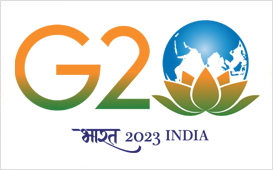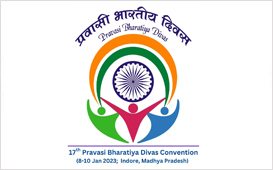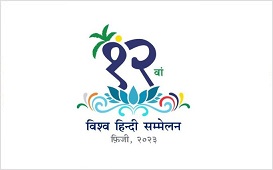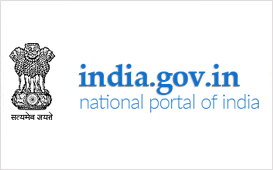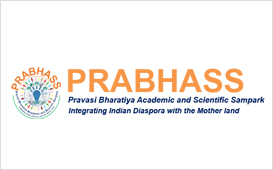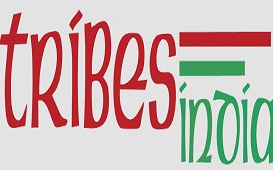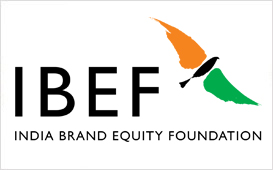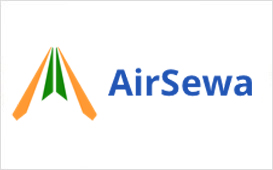COMMERCE WING UNCLASSIFIED BRIEF
As on 21 June, 2022
About
Commerce Wing
1. Commerce
Wing looks after India-Nepal exchanges in trade, transit and investments. It
also looks after bilateral cooperation in water resources sector and power sector.
In addition, it oversees cooperation in civil aviation and tourism sectors.
Commerce Wing also monitors the implementation of infrastructure projects
financed by Government of India’s Lines of credit (through EXIM Bank of India).
Commercial
and Economic Relations:
2.
India is Nepal's largest trade partner and the largest source of foreign
investments, besides providing transit for almost entire third country trade of
Nepal. India accounts for about two-third of Nepal’s merchandise trade, about
one-third of trade in services, one-third of foreign direct investments, almost
100% of petroleum supplies, and a significant share of inward remittances on
account of pensioners, professionals and workers working in India.
Bilateral
Framework for Trade and Transit
3.
The bilateral framework for trade is anchored on the India-Nepal Treaty of
Trade and Agreement of Co-operation to Control Unauthorized Trade - 2009. The
revised Trade Treaty, valid for seven years, was signed on October 27, 2009.
Both Treaties were automatically renewed for a further period of 7 years in
October 2016. The Trade Treaty allows Nepal unilateral duty-free access to the
Indian market.
4.
India and Nepal also have a Treaty of Transit, which confers transit rights
through each other’s territory through mutually agreed routes and modalities.
Its revised version was signed on 6 January 1999 and has since been
auto-renewed every seven years, the last being in 2020. The Treaty and the LoEs
associated with it allow Nepal’s merchandise to move seamlessly through India’s
road, railway and ports network.
5. The
India-Nepal Rail Services Agreement (RSA) 2004 governs the rail-freight
transport between the two countries. An LoE to the RSA was signed in June 2021
to liberalize the India-Nepal rail-freight traffic and bring it in line
with latest operational and
infrastructure status of Indian and Nepali Railways.. The LoE has allowed
market forces to come up in the rail freight segment and increased efficiency
and cost-competitiveness, eventually benefiting Nepalese traders, transporters
and the consumer.
6.
During the last Indian financial year that ended in March 2022, bilateral trade
between India and Nepal saw a 41% increase over the previous financial year. Further,
Nepal’s exports to India increased more than 100% over the previous financial
year, and constituted three quarters of Nepal’s total exports. By comparison, Nepal’s
2nd largest export destination was the United States with 10% share, followed
by Germany (2.3%), the UK (1.1%), Turkey (0.9%), France (0.8%) and Australia (0.7%).
Nepal is also India’s 11th largest export destination, up from 28th
position in 2014. Main exports from India are POL, iron & steel,
automobiles, machinery, cereals, etc. Nepal’s exports mainly constitute edible
oil, coffee, tea, spices and jute.
7. India-Nepal merchandise trade statistics over
the past few years are given below.
In US$ million
Indian Financial Year (April to
March)
Source: DGFT, Govt. of India
|
Title/Year
|
2017-2018
|
2018-2019
|
2019-2020
|
2020-2021
|
2021-2022
|
|
INDIA’S EXPORTS TO NEPAL
|
6,612.96
|
7,766.20
|
7,160.35
|
6,765.93
|
9,634.06
|
|
%Growth
|
21.26
|
17.44
|
-7.80
|
-5.51
|
40.88
|
|
NEPAL’S EXPORTS TO INDIA
|
438.38
|
508.14
|
711.61
|
670.33
|
1,371.04
|
|
%Growth
|
-1.52
|
15.91
|
40.04
|
-5.80
|
103.67
|
|
TOTAL TRADE
|
7,051.34
|
8,274.34
|
7,871.95
|
7,436.26
|
11,005.10
|
|
%Growth
|
19.54
|
17.34
|
-4.86
|
-5.53
|
46.51
|
8. Open border and connectivity projects
have been major facilitators of increased India-Nepal trade. In last Financial Year,
important developments like improvements in border infrastructure, enabling of Indian
RuPay payments in Nepal, signing of LOE to bilateral Rail Services Agreement,
signing of MoU on G2G supply of fertilizers from India to Nepal and progress in
bilateral power sector cooperation are likely to further boost bilateral trade.
9. An Inter-Governmental Committee (IGC)
meeting on trade, transit and cooperation to control unauthorized trade between
India and Nepal at Secretary-level is held on regular intervals. It is a
platform to discuss and resolve issues relating to bilateral trade between
India and Nepal, transit facilities provided by India to Nepal to facilitate
trade with third countries, investment promotion, improvement of infrastructure
at land customs stations, day-to-day problems in regulation of Nepalese
traffic-in-transit, issues related to Indian investment in Nepal, etc. Another
mechanism, the Inter-Governmental Sub-Committee (IGSC, Joint Secretary-level)
is also held regularly and usually precedes the IGSC.
The last meetings of the IGC and IGSC were held via videoconference
on 7 Dec 2020 and 3-4 Dec 2020, respectively.
Transit
of Nepal’s 3rd Country Trade
10.
Nepal’s transit trade is routed through twenty-two designated routes
between India-Nepal border and the ports of Kolkata/Haldia and Vishakapatnam.
In addition, Nepal’s trade with and through Bangladesh also transits through
India. Government of India is providing assistance for development of
cross-border trade related infrastructure. It includes upgradation of four
major Integrated Check Posts at Birgunj-Raxaul, Biratnagar-Jogbani,
Bhairahawa-Sunauli and Nepalgunj-Rupaidiha to international standards;
upgrading approach highways to the border on the Indian side; upgrading and
expanding the road network in the Terai region of Nepal; and, broad gauging and
extending rail links to Nepal. Integrated Check Posts at Birgunj and Biratnagar
are fully functional and works on ICP Nepalgunj have commenced.
11. LoE
on Operationalisation of Vishakhapatnam Port (Amendment in the Treaty of
Transit) for traffic-in-transit between Vishakhapatnam Port and Nepal was
signed in February 2016 during the visit of Prime Minister of Nepal to India.
Commensurate amendments in the Railway Services Agreement were also made. Since
then, it has facilitating movement of transit traffic between Vishakapatnam
Port to Nepal (ICD Birgunj) and providing additional transit facilities. Both
the Governments have now operated ECTS mechanism for transit cargo on a pilot
basis and discussions are going on to make it permanent.
Trade and Transit during the
Pandemic
12. When most borders around the world
remained closed, the India-Nepal trade routes continued to be open and robust.
In fact, after an initial slowdown in April 2020, the trade flows between India
and Nepal quickly picked up, and steadily began to exceed even long-term
averages. As per Nepal Custom’s data for Fiscal Year 2020-21 (ending in July
2021), which nearly coincided with the pandemic period, India-Nepal trade
registered a growth of 34% of the previous Fiscal year.
13. During the pandemic, almost 100% of
Nepal’s overland trade – with India and rest of the world – took place through
customs stations on the Indian border, which remained open throughout and in
both directions. Even during the pandemic’s 2nd and 3rd
waves we were able to keep the flows open, which included large quantities of
Covid-19 related medicines, critical supplies and equipment.
Indian
Investments in Nepal
14.
Indian Investment in Nepal: India is the largest source of investment
into Nepal, accounting for more than 32% of the total FDI stock of Nepal, which
is worth nearly USD 520 million, as per NRB data until mid-2020. There are
about 150 Indian ventures operating in Nepal engaged in manufacturing, services
(banking, insurance, dry port, education and telecom), power sector and tourism
industries. Indian companies and investments have played a key role in Nepal’s
national economic journey by contributing to industrialization, employment
generation, government revenue and export earnings.
15.
A Bilateral Investment Protection and Promotion Agreement (BIPPA) was signed on
21st October 2011. A model Bilateral Investment Treaty (BIT) is being discussed
between the two countries. India and Nepal also signed a Double Taxation
Avoidance Agreement (DTAA) on 27th November 2011. With the
signing of this agreement, bilateral trade and investment from India has got
further boost.
Customs
Cooperation
16.
A mechanism of Director General Level Talks on Customs Cooperation and exchange
of information between the Customs Administrations of two countries in place
since 1994. This mechanism provides an institutionalized arrangement to discuss
issues relating to enforcement, trade, transit and cooperation between the two
Customs Administrations. The talks in the past have led to improved cooperation
in the field of enforcement and facilitation of trade. 20 rounds of talks have
been held so far, the last of which was held virtually on 19-20 April 2021.
Water
Resources Sector
17.
Cooperation in water resources primarily concerning the common rivers is an
important area of cooperation. A large number of small and large rivers flow
from Nepal to India and constitute an important part of the Ganges basin. These
rivers have the potential to become major sources of irrigation and power for
Nepal and India. A three-tier bilateral mechanism established in 2008, to
discuss cooperation in water resources, flood management, inundation-control
and hydropower development between the two countries, has been working well.
18.
The Koshi Agreement (signed in 1954 and revised in 1966) and Gandak Agreement
(signed in 1959 and revised in 1964) represent the first major agreements on
India-Nepal cooperation in water resources sector. These were aimed at
flood-control, irrigation and power generation for the benefit of both India
and Nepal. Last India-Nepal Joint Committee on Kosi and Gandak projects (JCKGP)
took place in Patna, India from 12-13 April 2022. Another landmark agreement,
The Mahakali Treaty signed in 1996 between India and Nepal provides for
equitable use of the waters of the Mahakali river for both countries, including
through implementation of Pancheshwar Multi-purpose Project which will provide
irrigation, flood-control and power to both India and Nepal.
19.
As part of bilateral cooperation on flood-management, river training works on
Kamala, Bagmati and Lalbakeya rivers were completed under Indian
grant-assistance amounting to NRs 4.85 billion (more than INR 300 crores). These
works benefit several millions of people inhabiting in the watersheds of these
rivers in India and Nepal. Mutually-agreed emergency works have also been
funded by Govt. of India on other rivers to minimize the danger of inundation.
Government of India has also been proactive in providing relief material to
flood-affected areas in Nepal, constituting yet another area of India-Nepal
cooperation in this sector.
20.
In the last meeting of Joint Standing Technical Committee on Water Resources
held in January 2019, Government of India has agreed to support the river
training works in three more rivers i.e. Khando, West Rapti and Banganga, under
the Joint Committee on Inundation and Flood Management (JCIFM)
framework. The last meeting of the JCIFM took place in Kathmandu on 13-14 March
2022.
Power Sector Cooperation
21. The
Joint Vision Statement on Power Sector Cooperation issued on 2 April 2022 during
visit of Prime Minister of Nepal to India, laid out a comprehensive roadmap for
bilateral cooperation in the sector. Its key pillars include joint development
of power generation projects in Nepal, development of cross-border transmission
infrastructure, bi-directional power trade, coordinated operation of the
national grids and institutional cooperation in sharing latest operational
information, technology and know-how. The Vision Statement acknowledged the
role Indian investment can play in Nepal's renewable power sector to benefit
both the countries. The Statement also directed concerned officials on both
sides to expedite the bilateral discussions towards early finalization of the
Pancheshwar Multipurpose project’s DPR.
22.
The 9th meeting of bilateral Joint Steering Committee (JSC) and
Joint Working Group (JWG) mechanisms in power sector cooperation, established at
Secretary/Joint Secretary levels, respectively, took place on 23-24 February
2022 in Kathmandu. The meetings covered issues related to power trade, building
of cross-border transmission lines, development of new power projects and also
prospects for cooperation in renewable energy.
23.
Power trade is one of the three main pillars of India-Nepal power sector
cooperation as envisaged in the Joint Vision Statement issued on 2 April 2022. In
February 2021, India issued the Procedure for Approval and Facilitating
Import/Export Cross Border of Electricity by the Designated Authority (CBET
Procedure), thereby streamlining the regulatory regime and procedure for
electricity trade with and through India. In May 2021, Nepal became the first
country to benefit from this Procedure when Nepal Electricity Authority entered
into an arrangement with NTPC Vidyut Vyapar Nigam Ltd. to buy power in real
time from Indian Energy Exchange.
24. In October 2021, Central Electricity
Authority, which is the Designated Authority under the CBET Procedure, approved
the sale of up to 39 MW of power from two generating stations in Nepal to
India. In 2022, the approved quantum was increased to 364 MW through addition
of four more generating stations. This is the first time that Nepal is
exporting such large quantities of surplus electricity. The start of these
exports from Nepal to India under the CBET Procedure marks a crucial milestone
in bilateral cooperation and is likely to bring significant economic benefits
to both the countries.
25. India exported about 2200 MUs of
electricity to Nepal in 2021. During FY 2021-22, Nepal sought imports of up to
600 MW of power from India during the dry season (winter) which is more than
1/3rd of Nepal’s peak demand. Nepal also receives 70 MUs of free
electricity annually under the Mahakali Treaty, and additional free electricity
under the Koshi and Gandak Agreements.
26.
Power Transmission Lines: An India-Nepal Joint Technical Team
(JTT) was constituted in 2014 for preparation of a long-term integrated power
transmission plan covering projects up to 2035. The 10th JTT meeting
took place on 17 January 2022. There are around 11 transmission lines between
the two countries but the bulk of power trade takes place through
Muzaffarpur-Dhalkebar 400KV Double Circuit line.
27.
Muzaffarpur-Dhalkebar 400KV line: This line was launched by Prime Ministers of
India and Nepal during the latter’s state visit to India in February 2016. The
Nepal portion of the 140 km long line was built under an Indian LoC (line of
credit) of USD 13.5 million. On 11 November 2020, the line was successfully
charged to its full capacity. However, due to low distribution capacity of
Dhalkebar substation and limited integration with rest of the grid, the actual
power transmitted was less (up to 350 MW). With the operationalizing of
Dhalkebar substation on 1 Feb 2021, the line can now operate at its full
capacity. Dhalkebar has thus acquired the potential to become the major gateway
for cross-border electricity trade in South Asia.
28.
Two additional 132 kV cross-border transmission lines between Kataiya (India) -
Kusaha (Nepal) and Raxaul (India) - Parwanipur (Nepal), built with GoI grant
assistance, were completed in 2017. Both sides have decided to increase the
capacity of these two lines through stringing of additional circuits. Several
new cross-border lines are also under various stages of planning and execution,
such as the Gorakhpur-New Butwal 400 kV Quad Moose line (the 2nd
major cross-border transmission line being built under joint venture between
POWERGRID India and NEA Nepal), the New Nautanwa-Mainhiya line the
Nanpara-Kohalpur line, etc.
29.
India has also supported the construction of power transmission lines within
Nepal through Lines of Credit funding via the EXIM Bank. These include major projects
like Koshi corridor and the Modi-Lekhnath line & substations which are
nearing completion. The 132 KV Solu Corridor project was jointly inaugurated on
2 April 2022 by both the Prime Ministers of India and Nepal during visit of
Prime Minister of Nepal to India. Solu Corridor is a 90 km long, 132 kV Double
Circuit power transmission line and substation project connecting parts of
North-Eastern Nepal with the national electricity grid. It is a USD 29 million
project financed by Government of India’s Line of Credit, funded by EXIM bank
of India and executed by India’s Mohan Energy Corporation Private Limited under
EPC model.
30.
Arun III Project (900 MW) is a flagship project between India and Nepal
in the power sector. It is a peaking run-of-river project located on the Arun
River in Sankhuwasabha district of Province 1 in eastern Nepal. It is an
export-oriented project and was awarded to India’s SJVN Limited on
build-own-operate-transfer basis for a period of 30 years including
construction period. The foundation stone of the Project was laid by the two
Prime Ministers in May 2018. Since then, the construction of the
Project has progressed in full swing, with nearly 60% physical progress, and is
likely to be completed ahead of schedule. Once complete, it will be Nepal’s
largest power project.
31.
In July 2021, SJVN Ltd. signed a MoU with Investment Board of Nepal for the
development of Lower Arun HEP (679 MW) proposed to be located downstream of
Arun III and expected to be built as a cascade project. On 16 May 2022, during
the visit of Prime Minister of India to Nepal, SJVN Ltd signed an MoU with
Nepal Electricity Authority for joint development of Arun-4 HEP which would be
located upstream of Arun 3 HEP.
32.
The 900 MW Upper Karnali HEP was awarded to India’s GMR. The project is
currently in pre-construction phase and the developer is undertaking activities
related to land acquisition, compensation, financing and power purchase
discussions, in close supervision of the Investment Board of Nepal.
Petroleum
33.
The Raxaul-Amlekhgunj across border petroleum pipeline project is a 41-kilometer
pipeline to transport petroleum products from India to Nepal. The
project aims to connect Indian Oil Corporation’s regional depot at the
bordering Indian city of Raxaul with Nepal’s biggest fuel storage based in
Amlekhgunj. An inter-governmental MOU was signed on 24 August 2015. Indian Oil
Corporation and Nepal Oil Corporation also signed an MOU on 25 August 2015. It
is South Asia’s first cross-border petroleum products pipeline.
34.
Constructed and funded by Indian Oil Corporation Ltd., the pipeline was
remotely inaugurated by the two Prime Ministers on 10 September 2019. Within a
short span of being made operational, the pipeline is able to save Nepal Oil
Corporation nearly NRs. 15 crores a month. The pipeline created a record by
supplying 100 million liters of diesel to Nepal in a single month in December
2020.
35. India is the main supplier of petroleum
fuel to Nepal. The 3rd India – Nepal JWG meeting on Petroleum and
Gas took place on 07 March 2022 through videoconference. On 23 March 2022, a General
Supply Agreement was signed between Indian Oil Corporation Ltd and Nepal Oil
Corporation Ltd for supply of POL products for the period 01 April 2022 to 31
March 2027.
Civil Aviation
36.
The bilateral cooperation in this sector is governed by the India-Nepal Air
Services Agreement which was signed on 16th February 2010 to facilitate air
traffic between the two countries. 30000 seats per week have been allocated to
each side in each direction. The last structured bilateral discussions on Civil
Aviation cooperation were held on 21 December 2016 in New Delhi at the Joint
Secretary-level.
Tourism
37.
India is the largest source country for tourism into Nepal. Indians visit Nepal
for its lofty mountains, hospitality and cultural diversity. A large numbers of
Indians are also attracted to Nepal for religious tourism. The same is true for
the Nepalese who visit tourist places, shrines and temples located in the
farthest corners of India.
38.
A Memorandum of Understanding (MoU) on Cooperation in the field of Tourism was
signed between the two Governments on 25 November, 2014 in Kathmandu. The MoU
aimed to deepen and broaden cooperation in the field of tourism and also
promote cooperation and direct communication between the stake holders of
tourism and hospitality industry for enhancing tourism cooperation and
strengthening economic development and employment generation.
39.
The 2nd meeting of the joint Working Group (JWG, Joint
Secretary-level) on Tourism was held on July 6, 2018 in Kathmandu. The JWG
discussed a series of initiatives to boost tourism in both countries, including
through development of the Ramayana Circuit, the Buddhist Circuit and several
others.
Lines of Credit
40.
Government of India supported Lines of Credit (LOC) extended by the Export
Import Bank of India to Government of Nepal. GOI has agreed to provide four
lines of credit to the Government of Nepal for US$ 100 million, US$ 250 million,
US$ 550 million and US$ 750 million. These lines of credit were signed in June
2006, September 2007 and September 2016, for execution of infrastructure
development projects and post-earthquake re-construction projects as
prioritized by Government of Nepal. Last India-Nepal LOC Review Meeting took
place in Kathmandu on 29 March 2022.
41.
India’s Lines of Credits have financed 44 road projects, another 7 projects in
hydropower and transmission lines and several others in housing and
reconstruction, which are spread all across Nepal. A large number of these
projects are either completed or are nearing completion, including some iconic
and major projects such as Solu Corridor Transmission Line, Koshi Corridor
Transmission Line, Muzzaffarpur - Dhalkebar Transmission line, Rahughat
Hydroelectric project, Devighat hydroelectric project etc. Both sides are
undertaking regular discussions to identify projects under the LOC amount of
nearly US$ 1 billion that currently remains unutilized.
***




